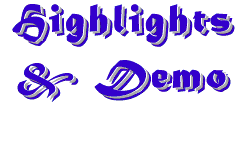
Revised site note 2/3/10: This page is left as it was originally with minor modifications. The page was meant as a quick look for the non-specialist at various points and views on my 1998 dissertation, "The Developing Terminology for the Self in Vedic India." The new dissertation interface as part of this revamped site launch is available here. Navigation links throughout this page follow the original old pathways through the site, and pop open new windows.
From here you can sample one of several contributions which this dissertation makes. It is designed to showcase both the findings and content of the original research as well as the technology by which the research was conducted and is presented. The more colorful animations are quite memory intensive and are specifically designed for my own demonstrations and those who have received a CD-ROM copy of this entire site. More information on this as well as how to join the online debate list serve are available.
For different levels of interest, I offer some suggestions of where to begin:
- For the specialist--anyone with knowledge of sanskrit--I recommend plunging ahead with the double pull-down menus in the other window according to your own interest first. You may also want to begin with the survey of conclusions below, but it may be more convenient (if you are planning to follow footnotes) if you choose Chapter 6, Threshold of Inquiry in the main window.
- History of Vedic literature
(choose Chapter 2 topics from the pulldown menus in the main window, or click here
- Vedic terminology for the body
(choose from Chapter 4, under tanuú from the main window pull-downs, or click here
- Two deities, Brahmanaspati and BRhaspati
(choose under bráhman in the main window's pull down menu, or click here
- Life, Breath, and Body (early use of ásu, praaNá, etc.)
(choose under tanuú in Chapter 5 from the pull down menus in the main window or click here
- Contrasting Yajur Veda versions of Agnicayana liturgy
Choose "Piling up of Boons" under Chapter 6 in the main window's pull down menus, or click here
- There are several options for the non-specialist, Western philosophy scholar, or educated lay-person:
- The Introduction to the dissertation (use the pull-down menus in the other window if you want footnotes, or click here) surveys the vocabulary of self and soul in the West as a starting point for the inquiry into South Asia
- You may also find the section on HTML (but the technology has changed so much that already some of this content is outdated), under Chapter 1, an enlightening and non-technical source of ideas for most any discipline.
- Most of the conclusions below are comprehensible if you've taken a reasonably good survey course in Indian or South Asian Religion, students of Buddhism may also recognice words (aatman is Pali "aatta", etc.),but it will load faster if you choose Chapter 6, Threshold of Inquiry in the main window.
- The Abstract also gives a sketch of what is covered.
- For the curious, you may wish to begin with the Abstract to see if you wish to go further, also:
- Interesting stuff about the origins of HTML and scholarship and its use in this study are in the HTML section of Chapter 1 (use the pull-downs in the other window if you want footnotes)
- the Introduction, also accessed from the pull-down menus, is quite useful for most anyone who's read a handful of literary works common in most Secondary and Undergraduate education literature courses.
- for a unique audio encounter, try the mantra analysis and audio clip of an ancient mantra
- memory-heavy animations showing how one goes "into" the world of the texts with the technology are found in the HTML section of Chapter 1
ENJOY!
